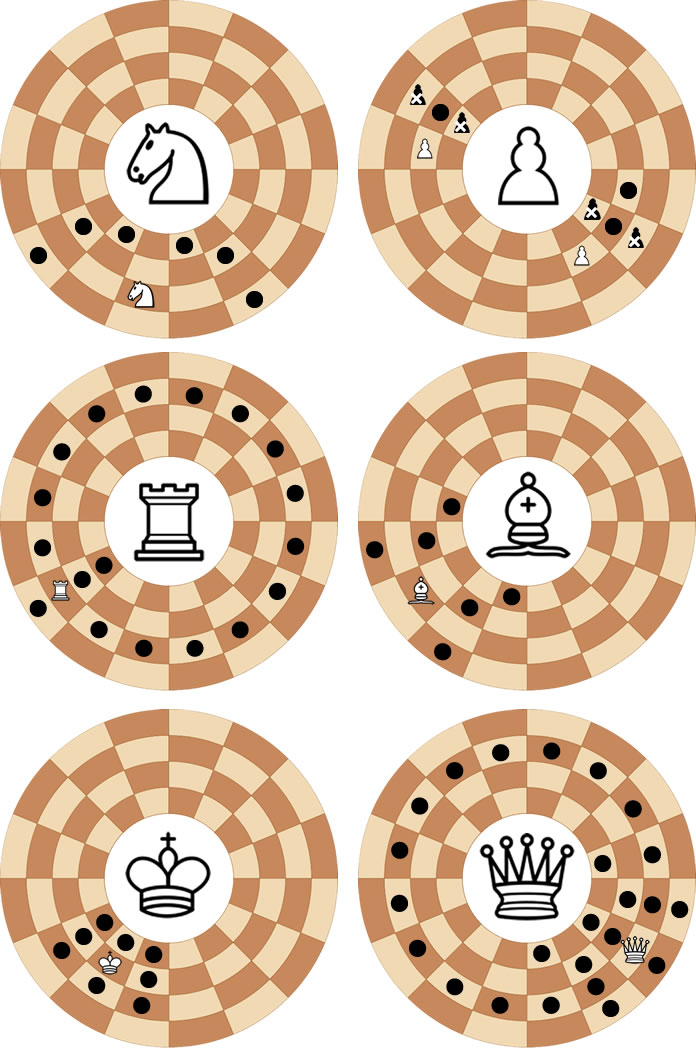Description
Circular chess is a chess variant played on 64 cells circular board made of 4 concentric rings of 16 cells each.
The following text is extracted from Wikipedia, under Creative Commons Attribution-ShareAlike 3.0 License. For more details and references, please access the original article.
Documents in the British Library and elsewhere suggest that circular chess was played in Persia as early as the 10th century AD, and further references are found in India, Persia, and, later, Europe. Historical rules are in sources that are little-known in the West, such as Muhammad ibn Mahmud Amuli's 'Treasury of the Sciences', so when, in 1983, Lincoln historian David Reynolds came across a reference to the game being played in the Middle Ages and set about attempting to revive interest in it, he chose to draw up a new set of rules, based around those of orthodox chess. Since that time, the older rules of circular chess have become far better known.
Rules
There are several Circular chess variants.
This version is known as Modern Circular Chess.
Each player commands a classical chess 16 pieces set:
- 1 king
- 1 queen
- 2 rooks
- 2 bishops
- 2 knights
- 8 pawns
Initial setup

Pieces moves
The moves are identical to orthodox chess moves adapted to circular topology.
Dispite this ring topology, Queens and rooks are not allowed to move to the position they are leaving.
There is no castling.
Pawns have double step start possibility. There is no "En passant" capture. Promotion is on the opponent start line (6 cells ahead from pawn start position)
Please see the move diagrams below.

For more details and references, please access the Wikimedia Circular Chess page.